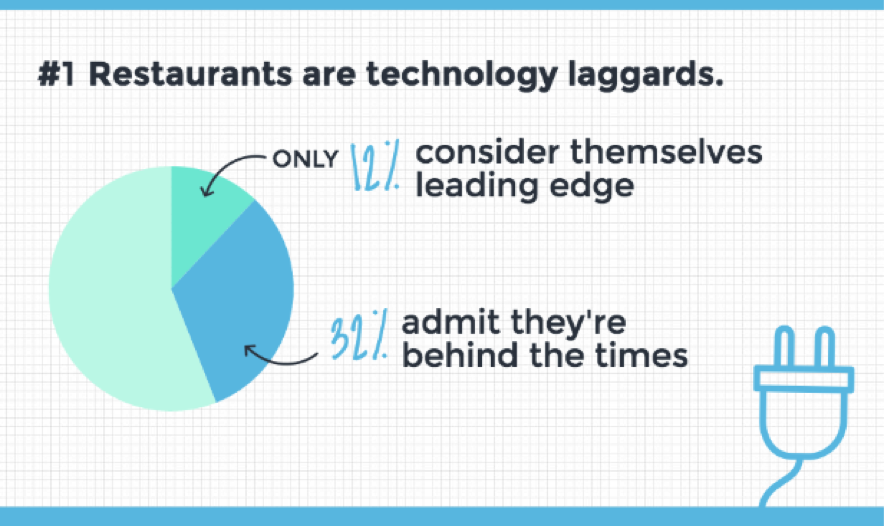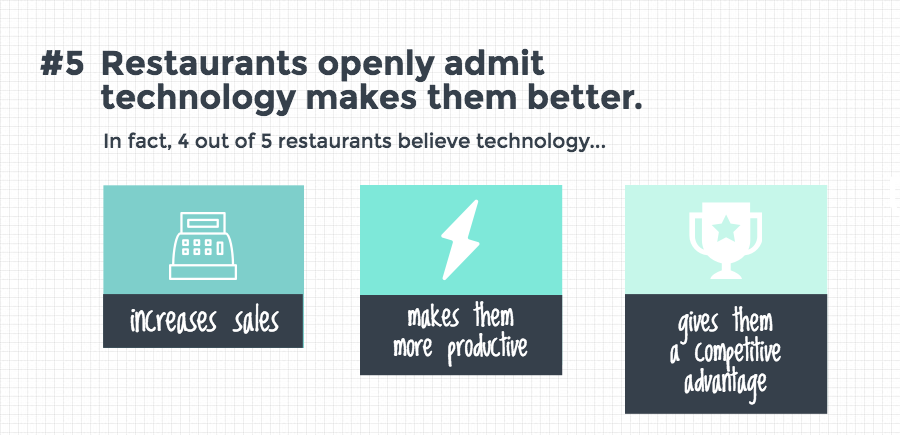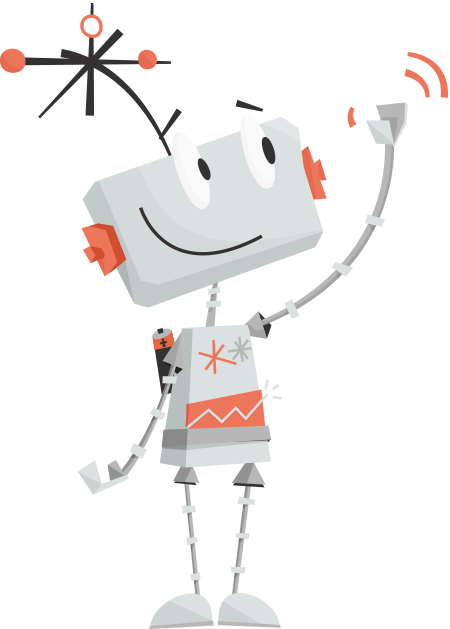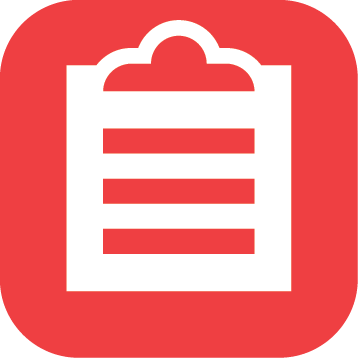Become an insider!
Get our latest payroll and small business articles sent straight to your inbox.

Paper is going the way of the dinosaur.
There’s so much technology, software and apps available today that manual processes involving paper, pencils and spreadsheets are going extinct. Consider it an ice age for inefficiency.
And that’s not a bad thing.
After all, small businesses, such as restaurants, spend huge amounts of time on manual tasks that require, well… basically shuffling stacks of paper. Hours are spent on the invoicing process, from getting approvals to making sure all supplies are accounted for. Inventory means sheets of paper and a clipboard, writing down totals and then looking up prices on paper invoices.
Add on scheduling, reservations, and ordering processes and there’s no doubt the restaurant industry could benefit from going paperless.
Not only can technology save hours of time and thousands of dollars — automated processes will also give them something they don’t have today: Real-time insights that will give restaurants the power to run their businesses better.
Going paperless is a must. There are just far too many reasons to ignore.
#1 — There’s a Plethora of Restaurant Technology Available
Historically, restaurants (especially smaller chains and independently owned outlets) haven’t made great targets for technology companies looking to be the next unicorn. Instead, technology companies focused on solutions that would bring high-profile, top-dollar clients.
But all that’s changing.
Technology for restaurants of all sizes has exploded in the past five years. In fact, there are now 24 distinct categories of software and more than 200 companies taking the industry by storm.
And this number is increasing daily as entrepreneurs and restaurateurs chase this growing space. On the investment side, investors infused billions into the restaurant tech space with $665 million in private investment in September 2016 alone.
The result is an abundance of new tools, experiences, and innovative technology that is disrupting the entire food and beverage ecosystem. This technology can be deployed by non-technical resources and are specifically geared for restaurants.
With just 12% of restaurateurs identifying their operations as leading edge, it’s glaringly apparent that — although technology is the norm in our everyday lives — it’s not yet a given in the restaurant industry.
The time is ripe for the industry to take advantage of the abundance of software and apps made especially for their unique business problems. Technology companies see the dollar signs. Restaurants need to quickly gobble up the benefits.
 Related: 100 Amazing Restaurant Software Apps You Need To Know
Related: 100 Amazing Restaurant Software Apps You Need To Know
#2 — Manual and Offline is Being Replaced by Automated and Online
An average restaurant spends 9 hours a month on invoicing and accounting. Weekly inventories take at least 12 hours per person and two people a month to complete.
Most of these hours are spent managing paper. Ordering, inventory, scheduling, reservations, and even bookkeeping are all paper-based processes. Clipboards, pen and paper, and spreadsheets are the common tools of the trade.
If you evaluate the processes and procedures for running a restaurant, you’ll realize they’re mostly offline and manual. And that’s odd considering how we use apps and software to run almost everything else in our lives.
Shouldn’t restaurants be using the same technology to run their small businesses?
The short answer is yes. Slowly, but surely, restaurants are quickly replacing these archaic paper processes and habits with smart technology and slick apps that save time and drive efficiency.
#3 — Restaurant Tech Makes Your Team Happy
The world has gone digital. From the moment we wake up, we’re using apps to run our lives from checking the weather to checking our profiles.
And what restaurants are finding is that their team wants the same experience at work. Managers and servers are more comfortable on an i-Thingy than a telephone. Hand millennial servers a clipboard or spreadsheet and they’re likely to ask, “Isn’t there an app for that?”
The workforce is not only comfortable using technology, they actually prefer cool new tools. In fact, 75% of millennial employees believe access to technology makes them more effective at work.
The composition and technical savvy of the restaurant worker has changed. The workforce is decrying the old-school processes that require paper and pencils and demanding a better way.
In the volatile world of restaurant staffing, ensuring that your workers are comfortable and happy with the processes and procedures might mean the difference between loyalty and turnover. The latter means extra money spent on hiring and training, money that businesses with small margins, like restaurants, don’t have the luxury to spend.
Going paperless will make your team happy… as well as your bottom line.
 Related: The Epic Guide to Employee Management
Related: The Epic Guide to Employee Management
#4 — Restaurant Software is Now More Affordable
Five years ago, if you said “technology” to a restaurant, the owner would immediately think “on-premise, server-based hardware and software” that was likely to require ample investment and take a huge bite out of the bottom line.
That’s because traditionally the only technology a restaurant has was a point-of-sale (POS) system. While POS systems have come a long way since they first debuted, most restaurants still associate technology with a huge burden on their budgets.
The internet and the cloud are quickly changing those assumptions.
Restaurants can now purchase online software that can be deployed in days, delivered with month-to-month contracts, and — best of all — obtained on a small budget. The technology that lets restaurants go paperless is as easy as setting up an app on a smartphone and it often pays for itself.
Restaurant technology has a new proposition… high value with low cost.
#5 — It’s Easy to Get Up and Running
Until recently, restaurant technology was stuck in the past.
In a world where the largest technology investment for most restaurants was a POS system developed in the 1990s, the standard expectation is that “technology” means you’re going to get on-site hardware and software.
In other words, clunky and hard to implement.
That’s where new online software comes in. It ditches the awkward feel of traditional, stationary software and pivots toward fast, friendly user interfaces and mobile platforms that feel more like consumer apps. Think downloadable iPhone apps and Software-as-a-Service (SaaS).
That means instead of months of setup time to get all the restaurant’s information into the system and hours more training employees, restaurants can complete setup in days. Team members self-teach themselves the technology because it’s intuitive, which means managers and operators don’t have to spend time and money training (and even re-training) their teams.
Unlike “technology” of the past, new software and apps are easy to get up and running… so busy restaurant managers can get the job done and get back to running their restaurants.
Market Movers
Who’s serving all this technology up?
Many technology startups have poured energy into helping restaurants go paperless. There’s a growing crowd of smart, agile companies driving a renaissance of restaurant technology. These startups pinpoint distinct issues for restaurants and solve them in innovative ways.
Here are a few main categories of restaurant software and technology and the companies within them that are catering to the unique needs of this industry.
|
Category |
Companies |
|
Customer Service |
|
|
Marketing |
|
|
Operations |
|
|
Time Tracking / Scheduling |
These are only a smattering of the software, apps and modern technology available to restaurants today. The tale of the tape is that despite slow adoption initially, the future will show more restaurants embracing and expecting apps like the ones above to be a part of their daily business operations.
The industry is slowly-but-surely becoming tech-minded. And the key to faster adoption will be affordable, easy-to-use technology that lets restaurants go paperless in almost every area of running their businesses.
It’s An Apt Time For Apps
Apple reports there are 2 million apps now available on the App Store to download. These apps represent the acceleration of a way of life that barely existed five years ago.
And while most businesses can’t survive without software and apps, the restaurant industry has mysteriously been left behind by technology. It’s a double whammy of technology companies ignoring the industry and an industry that is old school… and not in a good way.
Only over the last few years have apps specifically been made for restaurants and many owners and operators have been slow to adopt them. Fearful of change, they neglect the power of apps they use every day in their personal lives to automated almost everything about running their restaurants.
Despite this slow adoption, there’s no doubt that the benefits of going paperless are drawing the attention of restaurant owners and operators. There’s so much technology on the market today that automates manual, time-consuming processes from inventory to payroll. It’s affordable, easy to set up, and creates a better environment for the team to work in. Not to mention busy operators save hours of precious time they can devote to training or hospitality.
Restaurant apps are pushing the boundaries of what can be done right from a phone… whether it’s something as complex as taking reservations, scheduling the team, customer service, or just running their businesses better by going paperless.
For too long, the restaurant industry has been left behind by technology. Restaurants had no choice but to use manual, outdated methods to run their businesses. But now technology has ushered in a new era of innovation.
The trail has been blazed for going paperless in the restaurant industry.















